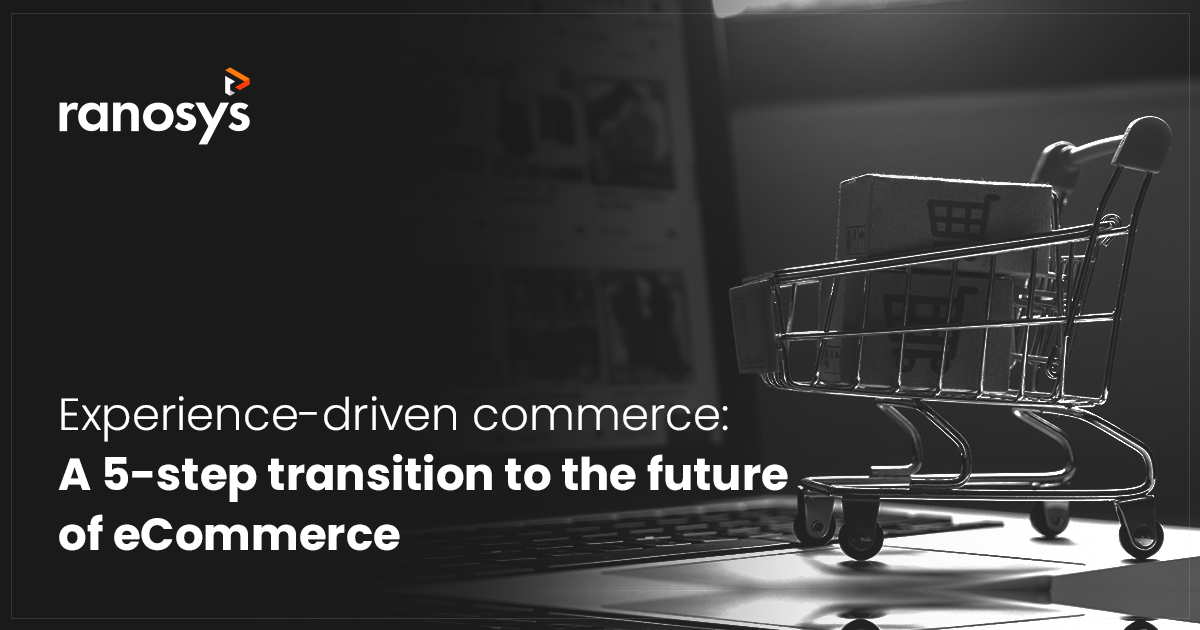Retailers might think that unbeatable product prices is the only way to win the eCommerce race, but the reality is far more drifting than the assumption. The truth is, competing on the basis of low prices is not a sustainable strategy for B2B eCommerce and other retail businesses. Brands are moving from product-as-a-service to experience-as-a-service economy. Today’s consumers, 2.14 billion online shoppers, to be exact, want to buy from companies that acknowledge their preferences and needs and build an emotional connection with them. And, they are ready to take on a rewarding journey of exploring, interacting, and shopping with B2B and B2C eCommerce brands. With marketers around the world baffled with experience-driven commerce crowned as the future of eCommerce and the sudden interest in extending impeccable eCommerce customer experiences across all touchpoints, it’s imperative to know what experience-driven commerce means and encompasses. After all, experience-driven commerce is the foundation of a successful and omnichannel commerce strategy of the future.
What is experience-driven commerce?
In simple words, experience-driven commerce deals with bettering the end-to-end customer experiences both online and offline. Every action, every campaign, and every marketing activity deals with adding value, creating valuable content, improving eCommerce customer journeys, and designing personalized user experiences in eCommerce. As the future of eCommerce, experience-driven commerce brings together the power of content, data, and insights to offer your shoppers a personalized, omnichannel, and memorable eCommerce customer experience during every interaction across all touchpoints.
Why does experience-driven commerce matter?
The eCommerce market has changed dramatically since its inception. There was a decade when product quality and price could do the trick, but today’s customers are different from their predecessors. They have come to expect an elevated eCommerce customer experience and impressive eCommerce customer service across the web, mobile, social, and all the other online stores.
Having an easy-to-use eCommerce website functionality along with a good product at an unbeatable price is good to have, but not a must-to-have. Rather, it has been replaced by eCommerce customer experiences.
Today, not only are there an increased number of online shoppers trusting online B2C and B2B eCommerce channels to purchase products, but there is an ever-increasing number of breakpoints and channels to do so. Be it in-store, webstore, social store, smartwatch app, or any other platform, customers desire consistent and unique eCommerce customer experiences everywhere.
From video tutorials, landing pages, installation guides, product images, warranties, return policy, shipping details, and reviews, everything besides the catalog-based data helps you improve customer experience eCommerce and transition towards the experience-driven economy.
What customers want in an eCommerce site is a plethora of product information and personalized solutions that help them make a buying decision. Experience-driven commerce helps in designing personalized user experiences in eCommerce, one that addresses their needs and wants.
Regardless of whether you are a B2B or B2C eCommerce company, your buyers demand a smooth, pleasant, and easy eCommerce customer experience. And remember, if you aren’t able to satisfy your customers, your competitors are more likely to carve them out of your eCommerce customer acquisition base. It is precisely why experience-driven commerce matters, and is the future of eCommerce- because it helps brands to understand their customers on digital and physical touchpoints and then deliver critical eCommerce customer service and experience at the right time and touchpoint.





